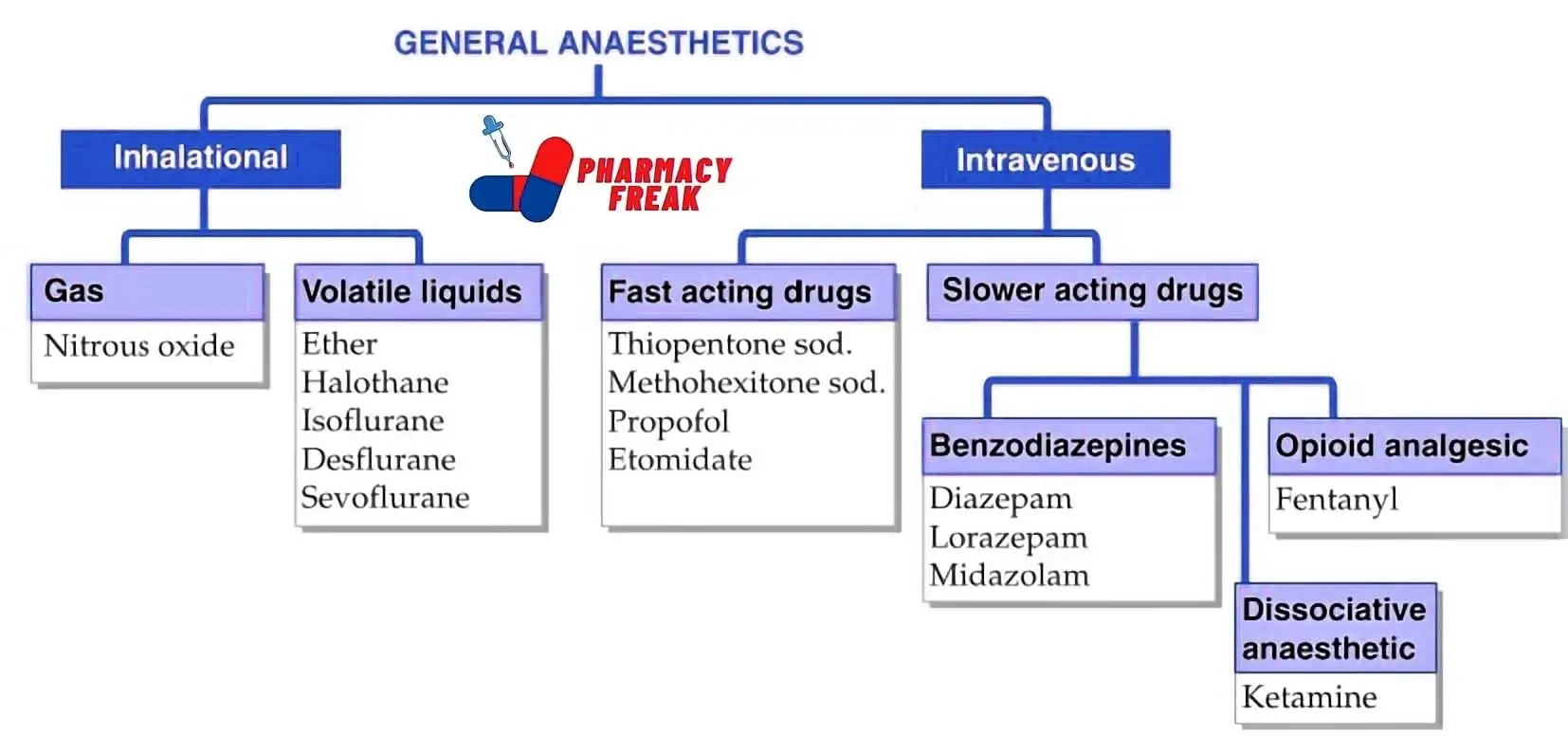General Anesthetics – these words often conjure images of an operating room, surgery, and unconsciousness.
Table of Contents
What are General Anesthetics?
General anesthetics are drugs used to induce a reversible loss of consciousness, making a patient unaware and unresponsive to surgical procedures or other medical interventions. They’re essential for modern medicine, allowing complex surgeries to be performed painlessly. Let’s classify them into some common categories:
Classification
GENERAL ANAESTHETICS
- Inhalational
- Gas- Nitrous oxide
- Volatile liquids- Ether, Halothane, Isoflurane, Desflurane, Sevoflurane
- Intravenous
- Fast-acting drugs– Thiopentone sod., Methohexitone sod., Propofol, Etomidate
- Slower acting drugs
- Benzodiazepines– Diazepam, Lorazepam, Midazolam
- Opioid analgesic- Fentanyl
- Dissociative anesthetic- Ketamine
Inhalation Anesthetics
These anesthetics are gases or volatile liquids that patients inhale. They’re delivered through a mask or a breathing tube. Common examples include:
- Nitrous Oxide: Also known as “laughing gas,” nitrous oxide is used in dental procedures and minor surgeries. It provides pain relief and a sense of relaxation.
- Desflurane, Sevoflurane, and Isoflurane: These are volatile liquids used in the operating room. They induce and maintain anesthesia during surgeries.
Intravenous (IV) Anesthetics
IV anesthetics are administered through a vein. They work quickly and are often used to induce anesthesia before switching to inhalation anesthetics for maintenance. Some examples are:
- Propofol: Known as the “milk of amnesia” due to its milky appearance, propofol induces rapid anesthesia and is commonly used for procedures like colonoscopies.
- Etomidate: Etomidate is favored for patients with cardiovascular instability as it has minimal effects on blood pressure and heart rate.
- Ketamine: Ketamine can induce dissociative anesthesia, where patients may appear awake but are detached from their surroundings. It’s often used for short procedures.
Intramuscular Anesthetics
These are injected into the muscles and are typically used when IV access is challenging. An example is:
- Dexmedetomidine: Although more commonly used for sedation, dexmedetomidine can also be used as an adjunct to other anesthetics.
Balanced Anesthesia
In many cases, a combination of different anesthetics is used to achieve balanced anesthesia. This approach aims to minimize the side effects of each drug while maximizing their benefits.
Local Anesthetics
While not general anesthetics in the traditional sense, local anesthetics are worth mentioning. They block sensation in a specific area of the body, allowing for procedures without general anesthesia. Examples include lidocaine and bupivacaine.
Reference
- Classification of Progestins- KD Tripathi
- National Library of Medicine- General Anesthesia for Surgeons
Related Links

I am a Registered Pharmacist under the Pharmacy Act, 1948, and the founder of PharmacyFreak.com. I hold a Bachelor of Pharmacy degree from Rungta College of Pharmaceutical Science and Research. With a strong academic foundation and practical knowledge, I am committed to providing accurate, easy-to-understand content to support pharmacy students and professionals. My aim is to make complex pharmaceutical concepts accessible and useful for real-world application.
Mail- Sachin@pharmacyfreak.com
